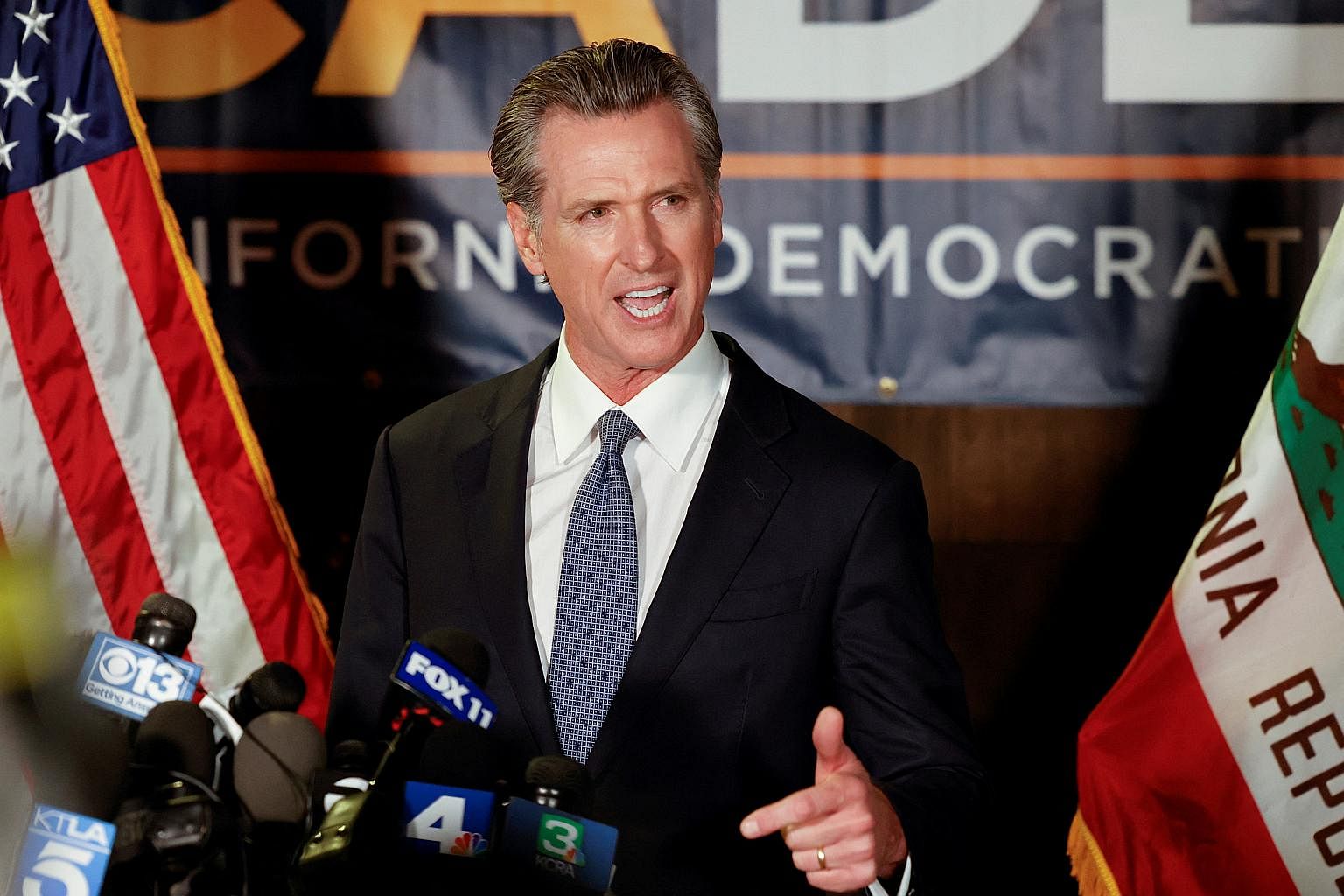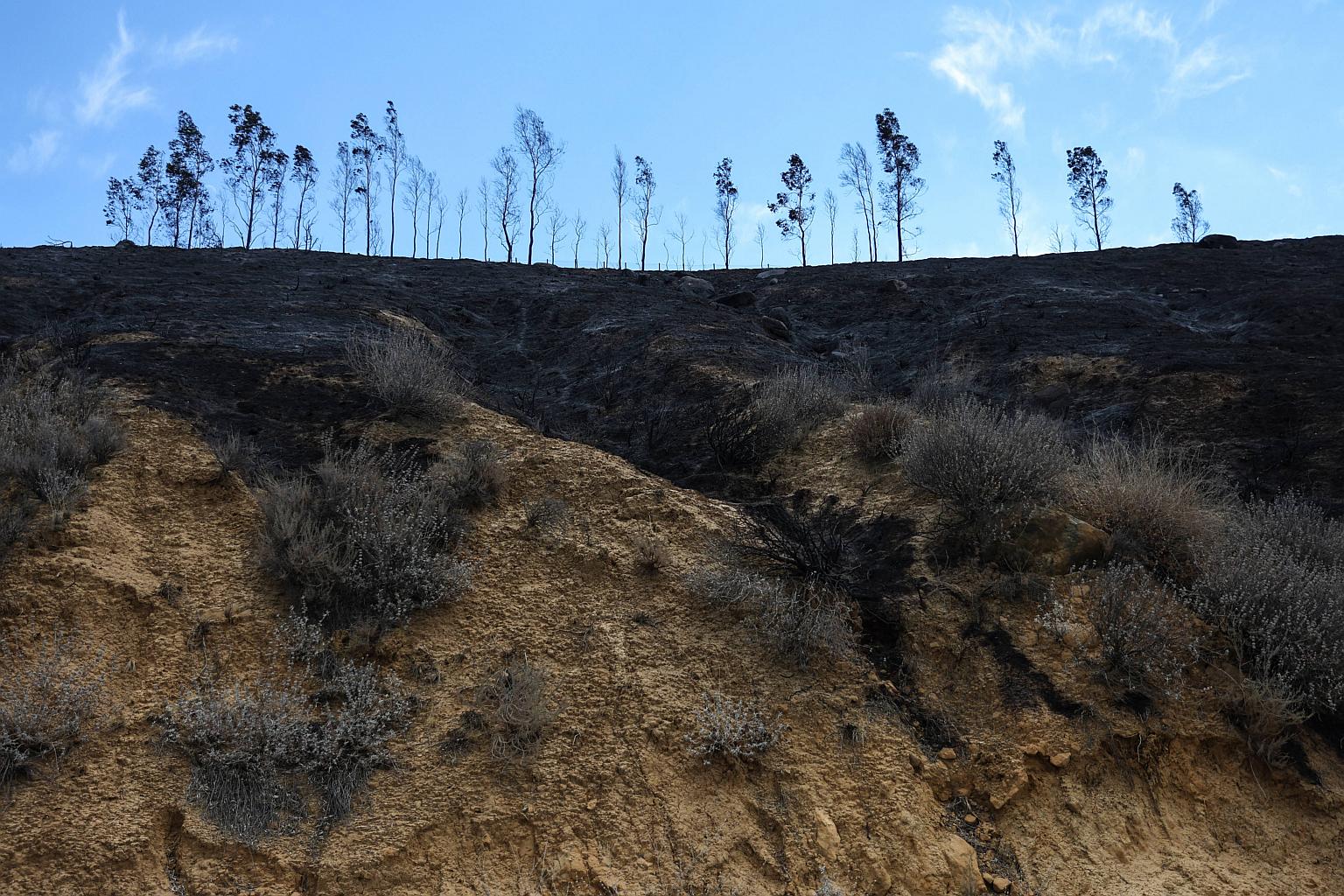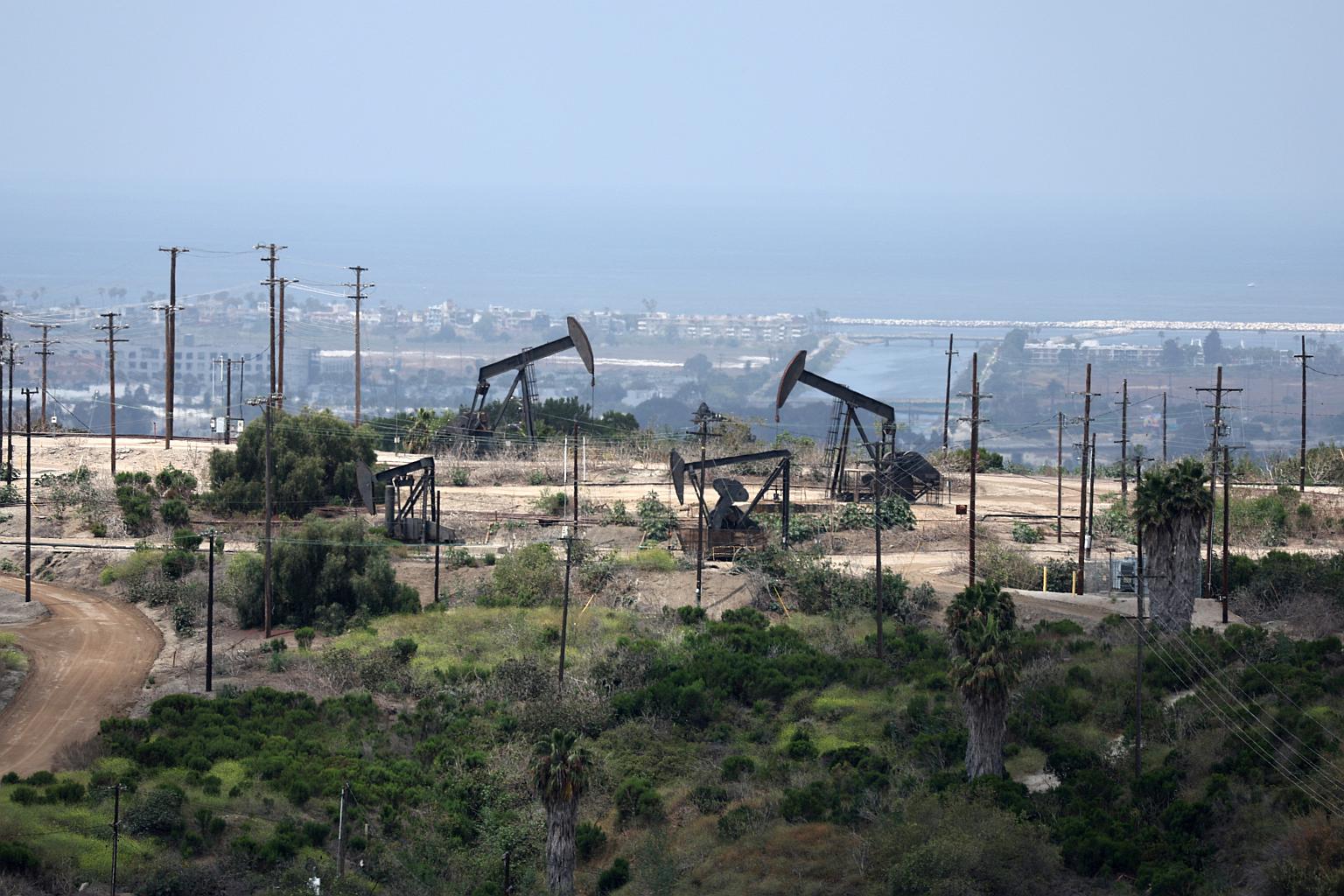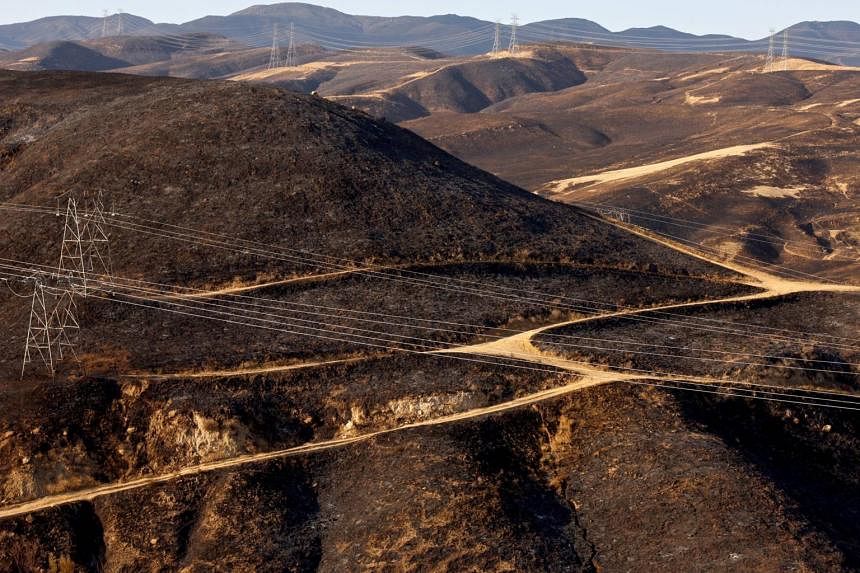WASHINGTON - California, with an economy that ranks as the world's fifth-largest, embarked this week on its most aggressive effort yet to confront climate change, after lawmakers passed a flurry of bills designed to cut emissions and speed away from fossil fuels.
Legislators approved a record US$54 billion (S$76 billion) in climate spending and passed sweeping new restrictions on oil and gas drilling as well as a mandate that California stop adding carbon dioxide to the atmosphere by 2045.
And they voted to extend the life of Diablo Canyon, California's last nuclear power plant, by five years, a step once unthinkable to many environmentalists.
Proponents said that California, which is again struggling to keep the lights on amid a scorching heat wave this week, needs the emissions-free electricity from the nuclear plant while other clean sources like wind and solar ramp up.
The bills, passed late on Wednesday night at the end of a frenzied two-year legislative session in Sacramento, marked a victory for Governor Gavin Newsom, a Democrat who has sought to portray himself as a climate leader as he has raised his national profile and begun drawing speculation about a possible White House run.
Newsom surprised lawmakers in mid-August when he urged them to pass several major new climate bills, many of which had failed in previous years.
In the end, all of his proposals passed but one: a bill to strengthen the state's 2030 target for slashing planet-warming greenhouse gas emissions, which fell short by four votes in the state Assembly.
"Together with the Legislature's leadership, the progress we make on the climate crisis this year will be felt for generations and the impact will spread far beyond our borders," Newsom said in a statement.
The new actions by California add momentum to growing efforts in the US to rein in greenhouse gas emissions from the combustion of oil, gas and coal that are overheating the planet.
In August, President Joe Biden signed an expansive climate law that would invest US$370 billion over the next decade in low-emissions energy sources such as wind, solar and nuclear power.
But that law alone won't be enough to eliminate US greenhouse gases by 2050, a target that climate scientists say the world as a whole must reach to avoid the most catastrophic effects of climate change. To help close the gap, White House officials have said that states also need to take more forceful action.
California already has some of the nation's most stringent policies to promote renewable energy and shift away from oil, gas and coal. Last month, state regulators finalised a plan to ban the sale of new gasoline-powered cars by 2035, a policy that could be adopted by other states and is widely expected to accelerate the global transition toward cleaner electric vehicles.
But as record-breaking heat waves, droughts and wildfires have battered the state, Newsom has faced increasing pressure from climate activists to do more. As lawmakers voted in Sacramento, the National Weather Service warned that a "very dangerous" heat wave would grip the state through the Labour Day weekend.
The new bills aim to bolster California's plans to cut emissions, though experts said the state would now need to do the difficult work of achieving those targets.
Lawmakers had previously set a legally binding goal for California to slash its greenhouse gas emissions 40 per cent below 1990 levels by 2030. Under new legislation passed on Wednesday, the state will now have to cut emissions at least 85 per cent by 2045 while offsetting any remaining emissions by planting more trees or using still-costly technologies like direct air capture, which collects carbon dioxide after it has already been discharged into the atmosphere.
Still, setting an ambitious goal is only a first step. For now, the state is not even on track to meet its 2030 targets, said Danny Cullenward, policy director at CarbonPlan, a non-profit group that evaluates climate solutions.
He argued that California regulators are still putting too much faith in a cap-and-trade programme that imposes a ceiling on emissions from large polluters but that has come under criticism for being too lenient.
"If these new targets force state regulators to go back to the drawing board and come up with a credible new plan to cut emissions, that's great," Cullenward said. "But in my view, they still don't have a realistic plan for implementation, and that's the most important part." Other bills passed by the Legislature would require more concrete steps.
Lawmakers approved a budget laid out by Newsom that would spend a record US$54 billion over five years on climate programmes. That includes US$6.1 billion for electric vehicles, including money to buy new battery-powered school buses; US$14.8 billion for transit, rail and port projects; more than US$8 billion to clean up and stabilise the electric grid; US$2.7 billion to reduce wildfire risks; and US$2.8 billion in water programmes to deal with drought.

As part of that spending package, legislators endorsed a plan to keep open the Diablo Canyon Power Plant, a pair of nuclear reactors on the state's central coast that provide 9 per cent of California's electricity.
Those reactors were originally scheduled to close in 2024 and 2025, but the new plan extends those deadlines to 2029 and 2030 while providing a US$1.4 billion loan to Pacific Gas & Electric, the utility that operates the plant. PG&E is also expected to apply for money from a new US$6 billion federal programme designed to keep open existing nuclear plants.
Newsom had once been a firm believer that Diablo Canyon should shut down, siding with activists and environmentalists concerned about its impact on marine life and the risk posed by nuclear reactors sitting on several seismic fault lines.
But as California has faced increasingly severe heat waves that drive up demand for electricity and strain the grid, regulators have warned of potential power shortages in the years ahead. So this summer, Newsom reversed course and urged lawmakers to keep the plant open.
Some environmental groups opposed the move, arguing that the money would be better spent on other clean energy resources like solar and wind power and batteries. But supporters of keeping the plant open warned that California badly needed the electricity, and if the plant closed, it would be replaced with more polluting sources like natural gas.

In a letter to the Assembly on Tuesday, California's Democratic Senator Dianne Feinstein urged state lawmakers to act.
"The alternative to the closure of the reactors at Diablo Canyon will most likely be additional natural gas generation, which would reverse progress on emissions reductions and worsen air quality," she wrote.
One of the most contentious measures passed by the Legislature is a requirement that new oil and gas wells be set back at least 3,200 feet (975m) from homes, schools and hospitals, while imposing strict pollution controls on existing wells within that distance.
California is the nation's seventh-largest producer of oil but has never before enforced buffer zones around wells the way states like Colorado and Pennsylvania do.
Backers of the new rules estimated that 2.7 million Californians live within 3,200 feet of oil and gas wells, and a state health panel concluded last year that living near active wells increases the risk of asthma, heart attacks and premature births.
"The oil and gas industry is not opposed to setbacks and, in fact, supports local setbacks," said Kevin Slagle, a spokesperson for the Western States Petroleum Association. "However, a one-size-fits-all, political mandate for the entire state does little to protect health and safety, will make us more dependent on foreign oil and will likely increase costs for fuel and energy."
Another bill directs regulators to establish new guidelines for the use of carbon capture and storage, which involves trapping carbon dioxide from polluting industrial facilities and burying it underground. Newsom has said the technology, which has struggled to gain traction because of high costs, is needed for the state to meet its climate targets, though some climate activists oppose it because it would allow industries to keep burning fossil fuels. Notably, the legislation would ban the use of captured carbon dioxide for extracting more crude oil.

Some policy experts credited the governor with helping to break the logjam around climate policy in California. Many of the Legislature's climate bills appeared to be languishing until Newsom intervened in early August, laying out a five-point plan and urging lawmakers to send bills to his desk.
"For the last few years, the Senate has been the place where climate policy goes to die," said David Weiskopf, a senior policy adviser at NextGen Policy, a climate advocacy organisation. "But then Newsom showed up and said, 'Let's get climate done.' He'd never done that before." NYTIMES

